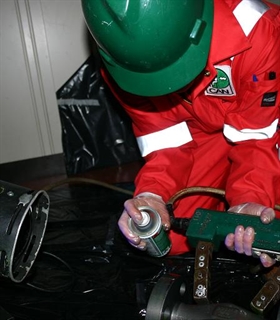August 2016
On 1 July 2016, the UK Government brought into force ‘The Control of Electromagnetic Fields at Work Regulations’.
Every day, we are surrounded by electronic devices that produce electromagnetic fields (EMF). The vast majority of these are well below safe levels, but this new law has been introduced to provide additional controls for those devices that pose a higher risk.
For the majority of workplaces, no action will be required. However, where higher risk equipment is being used, these regulations require employers to take further action to reduce their employees’ exposure to electromagnetic fields, in the form of a risk assessment and the implementation of suitable control measures.
Up until 1 July 2016, the risk of electromagnetic fields was managed through existing legislation – mainly the Health and Safety at Work Act and the Management of Health and Safety at Work Regulations. Whilst existing legislation covers some non-binding requirements, the EMF Directive introduces new responsibilities for employers, most notably the requirement to assess the levels of EMF to which their workers may be exposed against a set of specific thresholds. The new regulations deal with those responsibilities that go beyond the existing laws already in place.
After the regulation came into effect, Magnaflux EMEA received a high level of calls regarding the implications of the regulation for magnetic particle inspection. We quickly realised that a lot of the available information was not easy to interpret, mainly because the regulation applies to so many different scenarios.
It is also unclear what the boundaries are around responsibility. Some of our customers assumed that Magnaflux EMEA – as the manufacturer of the equipment – should be able to provide information that would prevent the need for a local assessment. However, this is not possible as:
Two of our customers in particular had questions relating to their specific set ups: one was using MPI benches and the other was using hand Yokes.
In light of the enquiries, Magnaflux EMEA developed a dedicated FAQ section on our website. We are continuing to add to this resource whenever we receive more questions from our clients.
Magnaflux EMEA is also looking to undertake specific measurements on all of our relevant equipment that will allow us to publish generic magnetic field strength data within our product literature. In all cases Magnaflux EMEA MPI equipment operates at low frequency (50-60 Hz) and, as such, the level of risk is low associated with exposure to EMFs is low.
Our recommendation – as laid down within the Health & Safety Executive guidance – is for the customer to carry out a local risk assessment, to include the measurement of the magnetic fields during typical inspections. This will allow the customer to check for compliance with the Action Levels set by the regulation. The risk assessment must include a consideration of the following:
This assessment should then be documented, controls implemented, communicated, and regularly reviewed, as with any other risk assessment.
Simple measures to reduce exposure may be the easiest way to ensure that exposure is beneath the relevant ELV. Examples could include moving the worker further away from the EMF source, or installing screening.
If, however, more controls are required, then an action plan will be needed. This, in essence, is a safe system of work that identifies:
The situation for our customer using MPI benches was simpler, on account of the distance their inspector will be from the magnetising equipment during the inspection process. At approximately 0.5 metres from the equipment, the level of EMF stemming from the coils is significantly reduced.
With our customer using a Y6 Yoke, the situation is more complex on account of the portability of this type of magnetising device. For example, working in a manner where the Yoke was closer to the head and torso would naturally represent a higher potential risk of exposure.

Subscribe to Magnaflux NDT Blogs:
Faraday Road, South Dorcan Industrial Estate
Swindon, Wiltshire, SN3 5HE, UK
Telephone: +44 (0)1793 524566
Contact Magnaflux Customer Service
Magnaflux, A Division of ITW Limited VAT number: GB 531 8325 59